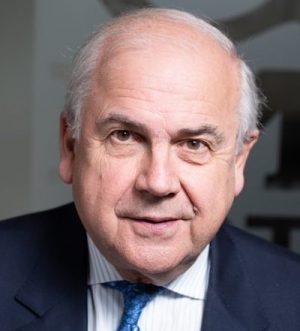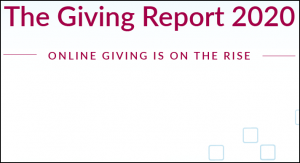 By Keith Sjögren. (Download text-only PDF of this article.)
By Keith Sjögren. (Download text-only PDF of this article.)
At the end of 2018, Investor Economics estimated that approximately 802,000 households in Canada each controlled more than $1 million in financial wealth, not including equity in real estate or private business. The total amount of wealth controlled by this small group, which is 7% of all Canadian households, was estimated to be $3.3 trillion, or three-quarters of the savings and investments of all households.
This group is responsible for an estimated 60% of annual charitable donations.
Even after the economic damage of the COVID-19 pandemic is considered, Investor Economics projects that this High Net Worth (HNW) segment will expand to 1.3 million households and their wealth to $5.9 trillion over the next ten years. There are numerous opportunities for fundraisers within this segment.
Positive indicators for charities

Considerable evidence shows that older High Net Worth Canadians are more generous in terms of donation frequency, amounts and percentage of income, compared to those under the age of 65 – and that women are more generous than men in terms of giving.
The expansion of the HNW segment, the source of most major gifts to Canadian charities, is influenced by several factors, other than the sheer increase in the number of wealthy households. These may bring some comfort to fundraisers.
First, there’s considerable evidence, including most recent income tax data posted by the Canada Revenue Agency (CRA), that older HNW Canadians are more generous in terms of donation frequency, amounts and percentage of income, compared to those under the age of 65. And the HNW segment is aging; at the end of 2018, 43% of HNW households had at least one member aged 65. By 2028, this will increase to 51%.
Second, the number of HNW women in Canada is increasing at a more rapid rate than the segment as a whole. At the end of 2018, HNW women (estimated to be 155,000 individuals) controlled approximately $550 billion in financial wealth. By 2028, this amount is projected to reach $1 trillion as a result of:
- a higher rate of participation by women in the workplace at managerial and executive levels;
- a rise in the number of female professionals and entrepreneurs; and
- women benefitting disproportionately from the massive transfer of wealth that is underway in Canada.
Various studies have underscored the fact that women are more generous than men in terms of giving and are also interested in investing for the purpose of social impact.

Read Sharilyn Hale’s article “Do better philanthropists lead to better philanthropy?” Hale is a professional philanthropic advisor and President of Watermark Philanthropic Counsel.
Finally, HNW families and individuals, regardless of gender, are the target of a growing number of professional advisors, including wealth management advisors, who are increasingly likely and able to discuss charitable giving as an integral part of multi-generational wealth plans. Over the past decade, the near explosive growth in the number of private family foundations and donor advised funds (DAFs) has been driven, to a large extent, through the guidance of these advisors. Not only are advisors more likely to engage their clients in discussions about philanthropy, but as revealed in a UK study, two-thirds of wealthy donors indicate they would be “likely or very likely to consult a professional advisor before making a sizeable gift.”
The focus of attention is entrepreneurs
Almost a quarter of family businesses in Canada are expected to be sold in the next five years, resulting in the release of substantial amounts of wealth. A 2012 paper by a Canadian bank estimated that the amount of “money in motion” resulting from the disposal of family businesses over the period 2012–2022 to be in the region of $3.7 trillion. This suggests there are opportunities for charities. A study of HNW families by Boston Private, a US financial institution, made two important observations: (1) overall, philanthropic activities are increasingly important to entrepreneurs in terms of financial priorities; and (2) 39% of business owners, compared to only 25% of non-business owners, rate philanthropic activities as being much more important as a driver of change.
How large is the potential pool today?
Usually, major gifts to charities are funded from unallocated wealth, not from income. How much wealth? If you remove money in registered and education savings plans, as well as that in short-term savings and demand accounts, unallocated wealth held by the HNW segment was approximately $1.3 trillion at the end of 2018. This amount may decline in the future as the responsibility for funding retirement continues to shift from employers to individuals.
Dividing “High Net Worth”
It’s appropriate to divide the HNW segment into two sub-segments: mass HNW and ultra-HNW. Most major gifts flow from mass HNW households. The ultra-HNW families or individuals hold wealth in excess of $10 million each. Of the unallocated wealth held by all HNW households at the end of 2018, the ultra-HNW sub-segment controlled an estimated $500 billion. This left $800 billion in the hands of the mass HNW households, and it’s from this pool (equivalent to 43% of their total wealth) that most major gifts are funded. On a per household basis, then, the average mass HNW household has about $1.05 million in unallocated wealth. A gift of 1% would, therefore, be $10,000.
Let’s not ignore HENRYs
HENRY (High Earnings Not Rich Yet) households aren’t defined as part of High Net Worth households in Canada. In 2018, Investor Economics estimated there were 65,000 households with an annual income of $200,000 or more that had accumulated more than $500,000 each. In addition, 150,000 high-income households each hold between $100,000 and $500,000 in wealth. About 64% of these HENRY households are donors, according to CRA data published by CanadaHelps.
Barriers to be brought down
Although many of the signs point to a better future in terms of the relationship between the HNW segment and the charitable sector, there remain hard-to-dislodge barriers in Canada:
- Perhaps the greatest barrier is a sense among HNW households that supporting charities is optional rather than a duty that comes with financial success. This issue, the subject of research by Imagine Canada, is cultural, not economic in nature. The need for a cultural change is underscored by the fact that, over the past five years, Canada has slipped from sixth to tenth in the World Giving Index ranking of generosity. In terms of volunteering, another cultural signpost, Canada falls well outside the top ten.
- Although the overarching challenge may be cultural, attitudinal barriers may also be difficult, if not impossible, to change. These bring into question the wisdom of an evangelical approach to major gift fundraising, as opposed to working more closely with proven philanthropists.
- Recent research points to common objections by members of the HNW segment to giving to charity. Other than an outright refusal (“I don’t want to give”), the objections fall into two areas. First, that giving is precluded by the needs of family and/or other financial obligations. Second, HNW households don’t trust charities to use their donated capital effectively. They also express frustration about charities limiting how much donors can dictate how gifts will be used.
- Other research reveals responses such as “Wasn’t asked” and “Plan to do all giving at the end of life.”
If charities are to benefit from the $800 billion pool of unallocated HNW capital, there needs to be a shift in HNW attitudes, along with repeated generosity by current donors. Also, charities of all sizes need to raise their levels of financial accountability, reporting and management. This should become a priority if donors and prospective donors are to view their gifts as investments that generate a social and not a financial return.
Keith Sjögren is Senior Consultant and Managing Director of Consulting Services at Investor Economics, as well as Chair of the MPNL Advisory Council. Sjögren is on LinkedIn.
Tuesday, January 5, 2021 in Fundraising
Share: Twitter, Facebook




